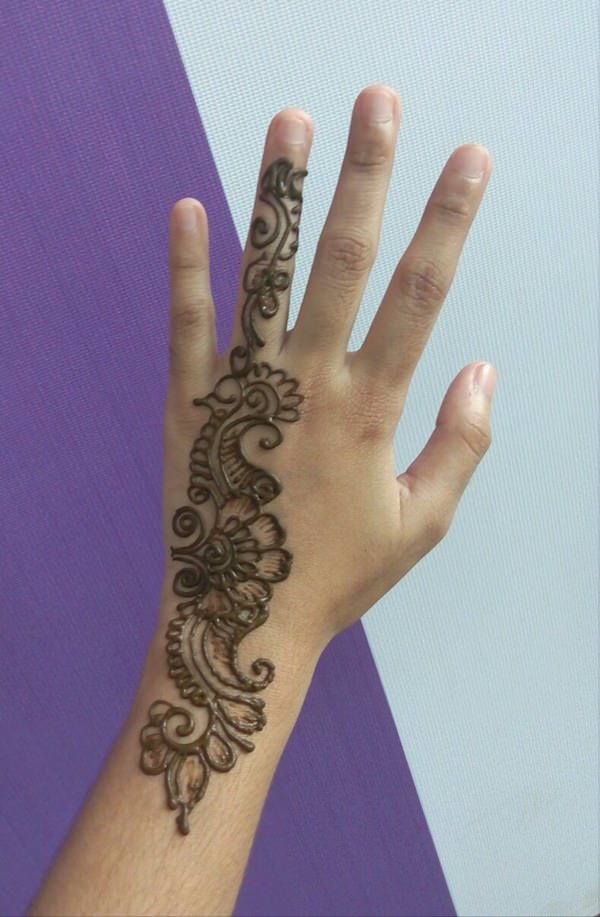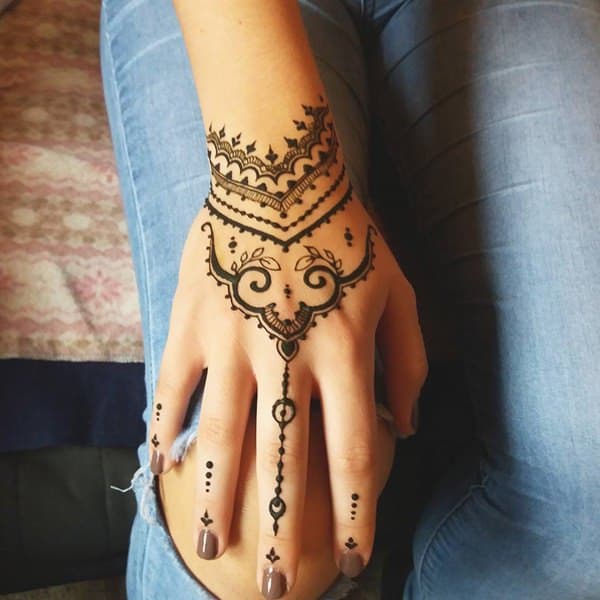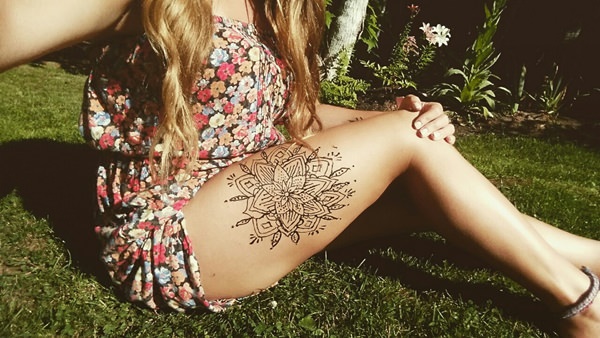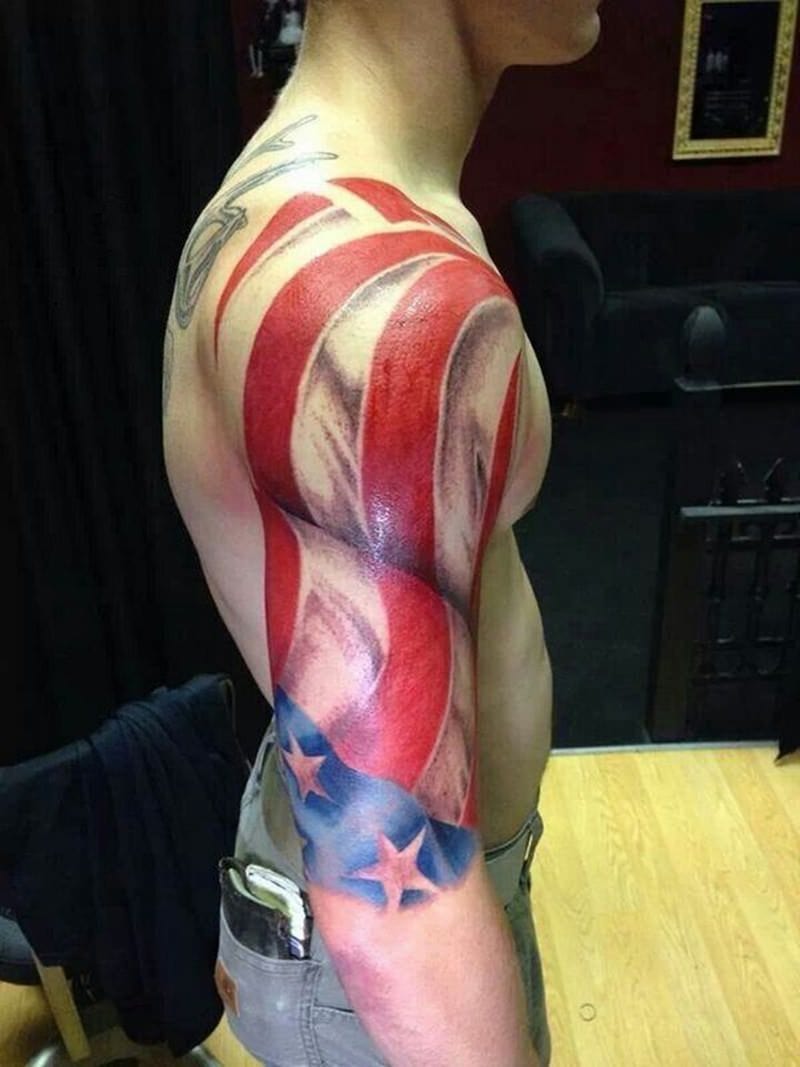Tattoos have become one of the most appreciated forms of arts in recent years. Spanning a multitude of styles from different countries and artists inventing their own, the tattoo community is in a constant state of motion and is constantly improving and innovating.
While for some people tattoos are not more than just ink on the skin, everyone who has ever gotten a tattoo knows it is much more than just ink. For some tattoos are a reminder of the choices they have made in their life, for some it may be a reminder or homage to someone they love, and for some it is a form of therapy.
Thanks to the deeper meanings that tattoos have for both the artist and the client, it has elevated beyond the point of simple body modification. However, getting a tattoo is not as easy as most people think, as you have to commit to the tattoo and have to bear a lot of pain when getting the tattoo. Not to mention, the thinking process for what tattoo you will get and where you will get it is important.
The kind of commitment and pain (as well as the aftercare) that comes with getting a tattoo is not for everyone. Some people just want a tattoo that looks good, hence the introduction of temporary tattoos; the king of which are henna tattoos.
You have probably heard of Henna tattoos before, as they have become all the rage now. From music festivals to generally on the street, henna tattoos are the most famous of any temporary tattoos. So, if you feel like getting a Henna tattoo, but don’t know where to start, or you’re hearing about it for the first time or you wish to know more about it, here is a complete guide on everything you need to know about henna.














History of Henna
Contents
Many sources believe that henna was first found in the deserts of India, where a small tribe began using the paste of the plant on their hands and feet as it made them feel cooler. It didn’t take long before a creative individual preferred to actually create designs rather than simply smearing the paste on their body.
That was a few thousand years ago, and since then the intricacy of the designs and the application method have all changed drastically. Since that time in the desserts of India, henna body art has managed to become a time honored tradition in countries, like Pakistan and India, where people get henna tattoos on traditional as well as religious occasions.
The meaning and significance of these designs have also changed massively throughout the years. Different communities believe that applying Henna to the body brings good luck and some also believe that henna helps keep them safe from evil.
Henna has stood the test of time and has not only managed to stay relevant throughout those years, but has grown considerably into other communities. Now you may be wondering, what is henna and why is it so popular?
What is Henna?
Let’s start off with what is possibly the most common question associated with henna tattoos, what is it?
Henna is a natural dye that is basically crushed henna leaves mixed with water to form a paste. This paste often carries a dark brown or olive color and once applied leaves a reddish brown color on the skin. The stain that the tattoo leaves on the body becomes a tattoo that is used by multiple people across various traditions.
Henna is very similar to ordinary tattoos in terms of application, except they have no pain associated with them and are not permanent. The natural henna dye seeps into your skin and leaves a stain that essentially turns into a tattoo.
Although you cannot change the color of your tattoo, you won’t have to commit to the incredibly painful process of getting a tattoo, or the permanent nature of the tattoo.
Henna is also naturally made, making it completely safe and free of allergens. Henna is not only used for tattoos, but people across many countries in South Asia tend to use it as a natural hair color as well.
What It Is Used For?
While henna has a variety of uses as hair color or as a form of therapy, it is more famously used as a temporary tattoo. Traditionally women in various South Asian and Middle Eastern countries have been using henna for centuries now as an accessory.
Women often apply henna to their hands and feet to honor their religious holidays and especially weddings. Its use in these religious holidays and events is not a religious necessity instead it resembles to more of a cosmetic. Women tend to use Henna tattoos as a cosmetic similar to why people often get regular tattoos: because they look good.
However, various Muslim communities believe that the motifs that women get as henna tattoos are helping in warding off evil eyes. Communities in Morocco believe that henna tattoos bring good luck and keep them safe from evil spirits.
On the other hand, the use of Henna tattoo has become somewhat famous in western countries as well. They are mostly seen in musical festivals as street artists are often found giving henna tattoos to participants in the festival. You may have even come across it randomly among various people.
Its popularity is often attributed to its temporary nature as well as its incredibly painless process. Many even find the process of getting a tattoo incredibly relaxing. Since they lack any form of commitment and can come off quite easily, this form of tattoo is a lot more inclusive and takes a lot less time than standard tattoos.
There has also been a rise in pregnant mothers getting henna tattoos on their bellies before or during a maternity photo-shoot or before a baby shower. There has also been a rising trend in patients undergoing chemotherapy to get henna tattoos on their newly bald heads.














Why Do People Get Them?
People often wonder why someone would get henna tattoos other than for cultural or religious reasons. Though it may be simpler to say that people get henna tattoos because they look good, there are many more reasons why people get henna tattoos.
Though the reasons for getting a henna tattoo can be a list on their own, here are three major reasons people get henna tattoos:

Temporary/Lack Of Commitment
Starting off with what is possibly one of the major reasons why people get henna tattoos in the first place, they are temporary. Permanent tattoos always come with a certain level of commitment as they are always permanent and cannot come off easily.
It is due to the commitment that they require and their permanent nature often makes people hesitant to get tattoos; and this is exactly why people tend to get henna tattoos. Since henna tattoos don’t require any kind of commitment and are temporary in nature, anyone can get them without having to worry about it not coming off.
Easy to Edit and Change
Speaking of commitment, this commitment also extends to you having to carry a tattoo that your artist may have not made properly. This is not the case with Henna tattoos as they take a longer time to set into the skin.
This leaves a lot more room for error and allows you to even change the design if it doesn’t quite suit you. This further adds to the temporary nature of henna tattoos. This further adds to the temporary nature of henna tattoos and makes it all the more inclusive for everyone.
Painless
Another one of the major benefits of henna tattoos is that they are completely painless and don’t take too long to add. Unlike permanent tattoos that use needles to add ink into the skin, henna seeps into the skin naturally. This makes the process completely painless and a lot less time consuming.
Depending on the artist and the motif that you intend to get, the process of getting a tattoo can take somewhere between a few minutes to a few hours.

The Tattoo Process
Getting a henna tattoo is very similar to getting a permanent tattoo, except there are fewer needles involved. Getting a henna tattoo is almost therapeutic in a way and is a lot more relaxing than most people expect.
Artists often use a freehand when working on a henna tattoo and take minutes or hours, depending on the design that you want to get. Once they apply the tattoo, the real challenge is waiting for the tattoo to dry.
Unlike conventional tattoos, henna tattoos stay on the skin for a long time so that it can properly stain the skin. This means that you will have to be careful not to remove it before it is able to properly settle in the skin.
Artists often recommend that you do not remove the henna yourself, instead just allow it to dry and fall off itself. This ensures that the tattoo itself does not fade faster than intended.
Some artists even add a mixture of lemon juice and sugar onto the finished product to make the dye stay in the skin for a longer period of time. While this is completely optional and not necessary at all, artists recommend applying this paste on your tattoo for at least four hours. Eventually the paste withers off, after which the dye reaches its peak intensity for the next 48 hours.














How Long Does It Last?
Henna tattoos are semi-permanent and leave a stain on the skin that eventually fades completely. Due to the natural exfoliation process of the skin, henna tends to fade away fairly quickly. The optimal time it takes for henna to fade away completely is between a week and a month. This saves you from the long term commitment that is often associated with permanent tattoos and allows you to enjoy your body art.
With that being said, there is a way for you to maintain your henna tattoo and continue to make it look vibrant and fresh. By applying a little beeswax or olive oil to your skin, you will be able to keep your tattoo fresh. Applying a coat of oil is especially important when you are going swimming or when you’re bathing.

Using Henna
If you are convinced to get a henna tattoo, there is a multitude of ways to do it. Either you can go to a professional artist or dedicated studio in order to get your tattoo, or you can do it yourself. Making your own henna tattoo is incredibly fun in its own right, especially if you have a friend to experiment with.
Though buying henna is incredibly convenient, you should always make your own henna at home. Many artists prefer that you make your own henna at home and not use henna that you can otherwise find in the market.
Henna that you find on the market uses para-phenylenediamine (PPD) in the solution, which essentially shortens the time that it takes for the henna to set.
Now before you think that this is a good thing, PPD offers a different color of henna and can possibly cause an allergic reaction on your skin due to its sensitizing effects. This means that if your immune system considers this substance as harmful, upon contact your skin may show signs of an allergic reaction. In simpler terms, upon contact with the substance your skin may begin to swell and develop blisters.
Since henna that you normally find in the market can have such an adverse reaction on your body, it is best for you to make henna at home. Not only does it create a much more vibrant color, but the mixture will also be a lot safer and will pose no threat of an allergic reaction.

Some Henna Tattoo Ideas
Now that you know everything that there is to know about henna tattoos, here are a few henna tattoo ideas to get you started:
1. This Lotus Flower Piece
The lotus is one of the most delicate and symbolic flowers, and is often used as a tattoo. That said, this piece manages to combine the lotus flower with a very beautiful Arabian aesthetic. The tattoo manages to mesh both Middle Eastern and Western styles together perfectly. The lotus is accompanied by various other smaller flowers that surround it along with the beads at the end of the tattoo. The tattoo is incredibly beautiful and a great place for you to start.







Processed with VSCO with hb1 preset






2. This Henna Sleeve
This henna tattoo manages to merge three different henna patterns and styles together to create this incredibly inventive and beautiful sleeve. The sleeve carries a multitude of intricate designs from the forearm to the small details on the finger connecting to the entire sleeve.

3. The Peacock
This Peacock tattoo is also a masterpiece thanks to intricate design and overall attention to detail. Peacock tattoos symbolize watchfulness, spirituality, and protection, and are very famous spiritual animals in Hinduism. The design of the tattoo is also incredibly intuitive and shows off the peacock and its beautiful feathers.

4. The Love Tree
An interpretation of the original love tree painting by Wendy Smith, this love tree tattoo manages to capture everything beautiful about the original painting. Even though this tattoo lacks the color and the backdrop that makes the painting such a masterpiece, it is still able to look beautiful and is able to carry the same meaning. The love tree also manages to look incredibly simple, while being incredibly complicated in design. The most common meaning associated with trees is that of resilience and long lasting.

5. This Elephant Tattoo
Elephants are religious figures in their own right as they have been revered in various religions and cultures. Elephant tattoos are often symbolic of good luck and prosperity. This henna tattoo features an incredibly joyous elephant made of various other patterns, shapes and designs. The henna tattoo is able to properly capture everything that makes this elephants in this tattoo. Other than the elephant, the artist also shows small flowers at the fingers above the tattoo.
6. Henna Band
Let’s move onto a simpler yet equally beautiful tattoo design, the henna band. The henna band is an incredibly simplistic design along with being stylish and absolutely amazing to look at. The tattoo is very reminiscent of Arabian aesthetics without being to flashy. If you’re looking for a tattoo that is little low profile and simple, this is the tattoo for you. The tattoo also features intricate line-work and patterns, making it the go to tattoo for people that are amused by such designs.

7. Dream catchers
Dream catchers are sacred talismans that are believed to protect people from bad dreams. Native Americans often get dream catcher tattoos as they symbolize a feeling of well-being and personal security for the bearer of the tattoo. This dream catcher tattoo shows a small dream catcher at the wrist with feathers extending to the forearm. Although this is a simple henna tattoo, it is simply beautiful to look at. If the dream catcher is not appealing enough, you can always mix it with a flower; this offers it a unique look.

8. The Crescent Moon
The crescent moon is one of the most famous tattoos. People often get these kinds of tattoos as they symbolize womanhood and in some communities refer to sleep. This tattoo sees a crescent moon with an detailed patterns inside the moon. This creates an incredibly unique design that not only looks good but holds a very important meaning for you.
9. This Incredibly Detailed Mandala
This list would definitely be incomplete without talking about mandalas. Mandalas are incredibly complex circular diagrams that people have come to now associate with Henna tattoos. Mandala Henna tattoos, or mandala tattoos in general, have become increasingly popular thanks to their intricate design and overall aesthetic. Although any mandala tattoo will do perfectly, this mandala tattoo is incredibly detailed and takes more of a floral design. The mandala design is also incredibly versatile in terms of its location, as you can get this tattoo anywhere on your body and it will be equally beautiful.

10. Owl Tattoo
Owls have long been considered as the wisest of all of the animals. This wisdom also extends to owl tattoos as one of the major reasons why people get tattoos is because they are symbolic of knowledge and wisdom. In Greek mythology an owl was Athena’s companion, the goddess of wisdom. Whether owl tattoos actually make you wiser or not is certainly up for debate, there is no doubting how good this tattoo looks. This henna owl tattoo manages to capture the beauty and magnificence of owls, as well as their massive eyes.
























Conclusion
Henna tattoos are possibly the most famous kind of temporary tattoo and for good reason. Since they are completely organic and have less risk of causing infections, they have managed to grow immensely in countries out of the Middle East and South Asia.
On the other hand if you are looking for a little more color in your temporary tattoos, you can always try on silicon henna. Silicon Henna or whit henna is a variation of traditional henna that provides a white color other than the usual reddish brown color that would come after the henna would dry. You can make the henna yourself or buy ready to use henna at the store.
Henna has stood the test of time throughout the many centuries that people have been using it as part of religious or cultural traditions. Regardless of its use in eastern countries, henna has only grown in popularity throughout Westerns countries with thanks to its organic and temporary properties. This saves people from the long-term commitment that is often associated with permanent tattoos.

